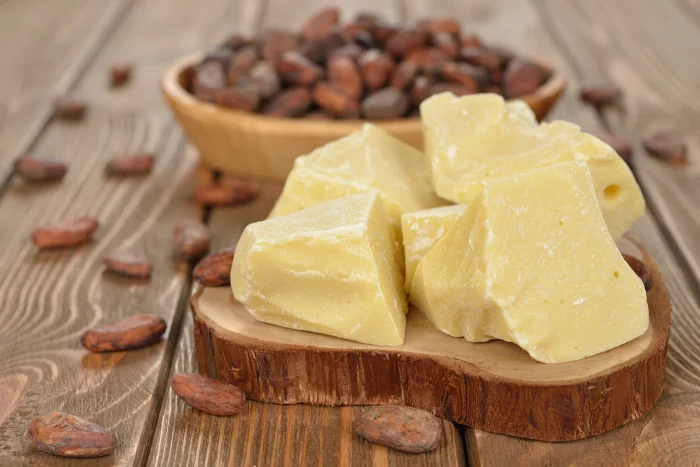Apple cider jelly is a delicious and flavorful spread that combines the natural sweetness of apple cider with the perfect balance of tartness and a jelly-like texture. It’s a fantastic way to preserve the taste of autumn, and it pairs wonderfully with toast, biscuits, cheese, or even as a glaze for meats. Making apple cider jelly at home is surprisingly simple, and with the right ingredients and a bit of patience, you’ll have a jar full of homemade goodness.
In this guide, we’ll walk you through the entire process of making apple cider jelly from scratch. We’ll break it down into clear steps, offer helpful tips, and provide some variations if you want to try something a little different.
What You Need to Make Apple Cider Jelly
Before we dive into the instructions, let’s make sure you have everything you need to get started. For a successful batch of apple cider jelly, you will need the following ingredients and tools:
Ingredients:
- 4 cups apple cider (make sure it’s fresh and not apple juice)
- 4 cups granulated sugar (you can adjust the sweetness depending on your preference)
- 1/4 cup lemon juice (freshly squeezed is best)
- 1 pouch liquid pectin (or powdered pectin, if you prefer)
- 1/2 teaspoon cinnamon (optional, but adds a nice autumn flavor)
- 1/4 teaspoon ground ginger (optional, for added spice)
Tools:
- Large pot (a 6-8 quart pot works well)
- Wooden spoon or heatproof spatula
- Candy thermometer (to monitor temperature)
- Sterilized jars and lids (to store the jelly)
- Ladle for filling jars
- Cheesecloth or fine strainer (if you want to strain the cider)
- Jar funnel (optional, but helpful for clean filling)
Once you have all your ingredients and tools ready, let’s move on to the preparation and cooking steps.
Step 1: Preparing the Apple Cider
Start by choosing a good quality, unfiltered apple cider. The cider should be fresh and not overly processed, as this gives the jelly its rich, fruity flavor. If you’re using store-bought cider, check that it doesn’t contain preservatives or added sugars.
If you want a smoother jelly, you can strain the cider through a fine-mesh strainer or cheesecloth to remove any solids. However, leaving the cider unstrained will give your jelly a bit more texture and body, which some people prefer.
Step 2: Boiling the Cider
Pour the cider into a large pot and set it over medium-high heat. Bring the cider to a boil, stirring occasionally. Once it starts boiling, reduce the heat slightly and let it simmer for about 15-20 minutes. This step helps concentrate the apple flavor and removes excess water.
As the cider simmers, you may notice a frothy foam forming at the top. Use a spoon to skim off this foam, as it can affect the clarity of your jelly. Once the cider has reduced and thickened slightly, it’s time to move on to the next step.
Step 3: Adding Sugar and Lemon Juice
After the cider has simmered down, it’s time to add the sugar and lemon juice. Add 4 cups of granulated sugar to the pot, stirring constantly to dissolve the sugar completely. This can take a few minutes, so be patient and keep the heat low enough that the sugar doesn’t burn.
Once the sugar is dissolved, add 1/4 cup of fresh lemon juice. The lemon juice is essential for balancing the sweetness and helps the pectin work effectively later in the process.
If you’re using cinnamon or ginger, this is the time to add those spices to the pot. Stir them in thoroughly, ensuring that the spices are evenly distributed throughout the mixture.
Step 4: Boiling the Jelly Mixture
Now, it’s time to bring the apple cider and sugar mixture to a full rolling boil. Increase the heat to medium-high and stir constantly. Keep a close eye on the mixture as it boils—it can bubble up quickly, and you don’t want it to spill over.
Once the mixture has reached a full boil, continue boiling for about 5 minutes. You want the liquid to reduce further, concentrating the flavor even more. During this time, the consistency of the jelly should start to thicken.
Step 5: Adding the Pectin
After the apple cider mixture has boiled for 5 minutes, it’s time to add the pectin. If you’re using liquid pectin (the most common type), simply add the entire pouch to the pot, stirring it in thoroughly. If you’re using powdered pectin, follow the instructions on the package to determine how much you need to use.
Stir the pectin into the mixture and bring it back to a boil. Allow it to boil for another 1-2 minutes while stirring constantly. This step activates the pectin, which will help the jelly set properly.
Step 6: Testing the Jelly for Set
To know when your jelly is ready to be jarred, you’ll need to test its consistency. There are a couple of methods you can use to test whether the jelly is properly set.
The Spoon Test:
Place a metal spoon in the freezer for a few minutes. Then, dip the spoon into the boiling jelly and lift it out. Let it cool for a few seconds, and then run your finger through the jelly on the spoon. If the jelly wrinkles and doesn’t immediately run back together, it’s ready.
The Gel Plate Test:
Alternatively, you can use a cold plate to test the jelly. Place a small plate in the freezer, then drop a spoonful of the hot jelly onto the plate. Let it cool for a minute and tilt the plate. If the jelly doesn’t run, it’s set.
If the jelly hasn’t reached the desired consistency, you can continue boiling it for a few more minutes and test again.
Step 7: Canning the Apple Cider Jelly
Once the jelly has reached the correct consistency, it’s time to transfer it to jars. Begin by preparing your jars and lids. Make sure they are clean and sterilized. You can do this by placing them in a hot water bath or running them through the dishwasher.
Using a ladle or jar funnel, carefully pour the hot jelly into the sterilized jars, leaving about 1/4 inch of headspace at the top. Wipe the rims of the jars with a clean cloth to ensure they are free from any jelly residue. Place the lids on the jars and screw them on tightly.
Step 8: Processing the Jars
To ensure your apple cider jelly is properly sealed and safe for long-term storage, you’ll need to process the jars in a hot water bath.
Fill a large pot with water and bring it to a boil. Carefully lower the jars into the pot using tongs, ensuring that the water covers the jars by at least an inch or two. Process the jars for 5-10 minutes. This step helps seal the lids tightly.
After processing, carefully remove the jars from the pot and let them cool on a clean towel or cooling rack. You should hear a “pop” sound as the jars seal. Once they’ve cooled completely, check the seals. If the center of the lid is depressed, the jar is properly sealed. If it pops back, you may need to refrigerate that jar and use it within a few weeks.
Step 9: Storing Your Apple Cider Jelly
Properly sealed jars of apple cider jelly can be stored in a cool, dark place for up to a year. Once opened, store the jelly in the refrigerator and consume it within a few weeks.
If you didn’t process the jars, store them in the fridge immediately after sealing. The jelly should stay fresh for 3-4 weeks.
Tips for Success
Choose fresh cider: The quality of the cider directly affects the flavor of the jelly. Try to use fresh, unfiltered apple cider for the best results.
Don’t overcook: Keep an eye on the jelly as it boils. Overcooking can cause the jelly to become too firm and sugary.
Experiment with spices: If you love autumn flavors, try adding cloves, allspice, or nutmeg to give your jelly a unique twist.
Use a candy thermometer: A thermometer can help you monitor the temperature of the jelly. Aim for around 220°F (104°C) for the perfect set.
Variations to Try
Cinnamon Apple Cider Jelly: Add extra cinnamon sticks while boiling the cider for a stronger cinnamon flavor.
Spiced Apple Cider Jelly: Include a mix of ground cloves, nutmeg, or allspice for a deeper, more complex flavor.
Apple and Ginger Jelly: Add a small amount of freshly grated ginger for a spicy kick that complements the sweetness of the apple cider.
Conclusion
Making apple cider jelly at home is a fun and rewarding project that captures the essence of fall in a jar. By following these simple steps, you’ll create a delicious jelly that’s perfect for spreading on toast, drizzling over pancakes, or pairing with cheese. Whether you’re enjoying it yourself or giving it as a homemade gift, apple cider jelly is sure to impress. Happy jelly-making!
Related topics:
























